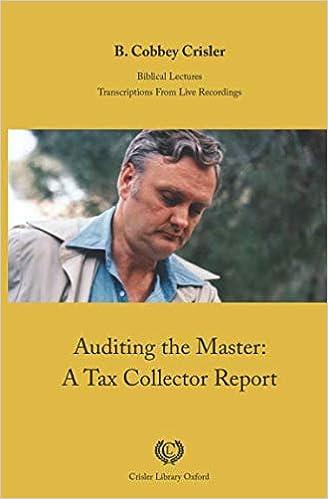Question
1. The specific identification method of inventory costing is recommended when a business deals in unique and high-priced inventory items. Select one: True False 2.-
1. The specific identification method of inventory costing is recommended when a business deals in unique and high-priced inventory items.
Select one:
True
False
2.- Given the same purchase and sales data, the three major costing methods for inventory will result in three different amounts for cost of goods sold. Assume the cost of inventory is rising.
Select one:
True
False
3.- Which of the following inventory costing methods yields the highest net income during a period of rising inventory costs?
Select one:
a. last-in, first-out
b. specific identification
c. first-in, first-out
d. weighted-average
4. A company that uses the perpetual inventory system purchased 500 pallets of industrial soap for $7,000 and paid $800 for the freight-in. The company sold the whole lot to a supermarket chain for $12,000 on account. Which of the following entries correctly records the sale?
Select one:
a.
Sales Revenue
12,000
Merchandise Inventory
12,000
b.
Cost of Goods Sold
12,000
Sales Revenue
12,000
c.
Accounts Receivable
12,000
Sales Revenue
12,000
Cost of Goods Sold
7,800
Merchandise Inventory
7,800
d.
Merchandise Inventory
12,000
Cost of Goods Sold
12,000
5. A company decides to ignore a very small error in their inventory balance. This is an example of application of the ________.
Select one:
a. disclosure principle
b. materiality concept
c. consistency principle
d. accounting conservatism
6. A company reports in its financial statements that it uses the FIFO method of inventory costing. This is an example of the disclosure principle.
Select one:
True
False
7. Which of the following inventory costing methods uses the cost of the oldest purchases to calculate the cost of goods sold?
Select one:
a. specific identification
b. last-in, first-out
c. first-in, first-out
d. weighted-average
8. In a period of rising costs, the last-in, first-out (LIFO) method results in lower cost of goods sold and higher net income than the first-in, first-out (FIFO) method.
Select one:
True
False
9. A company is uncertain whether a complex transaction should result in an asset being recorded at $100,000 or at $150,000. Under the conservatism principle, they should choose to show it at $100,000.
Select one:
True
False
10. The consistency principle states that a business should use the same accounting methods from period to period.
Select one:
True
False
Step by Step Solution
There are 3 Steps involved in it
Step: 1

Get Instant Access to Expert-Tailored Solutions
See step-by-step solutions with expert insights and AI powered tools for academic success
Step: 2

Step: 3

Ace Your Homework with AI
Get the answers you need in no time with our AI-driven, step-by-step assistance
Get Started


